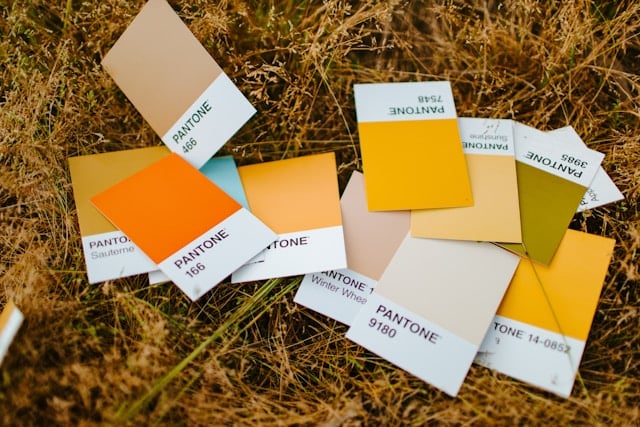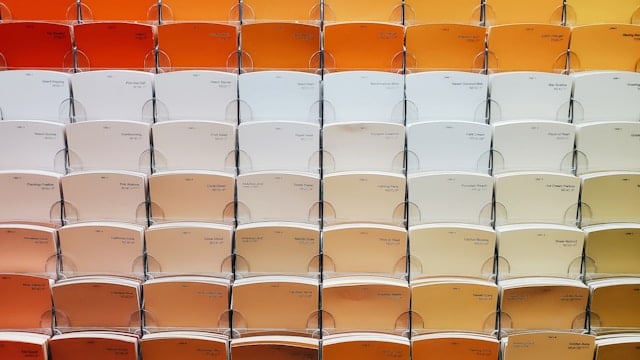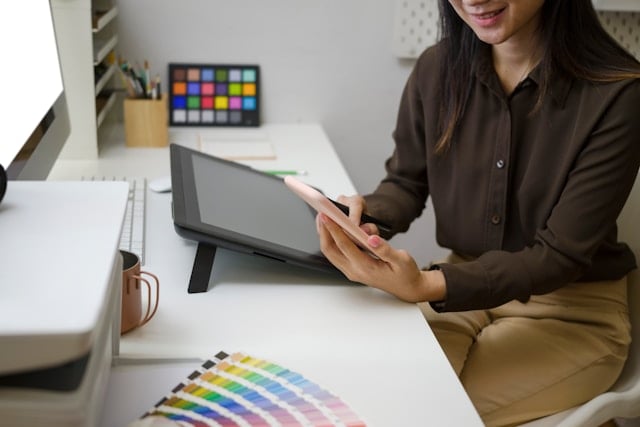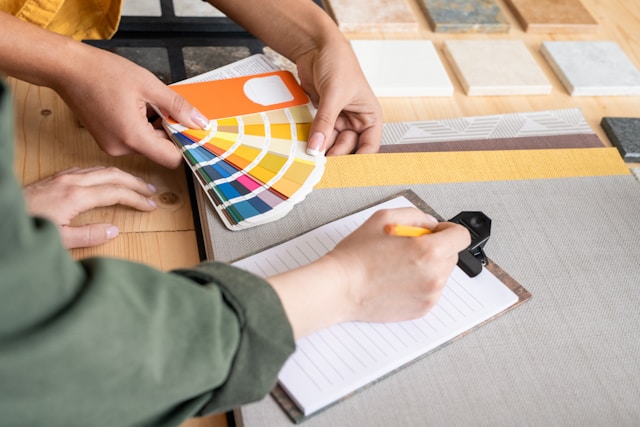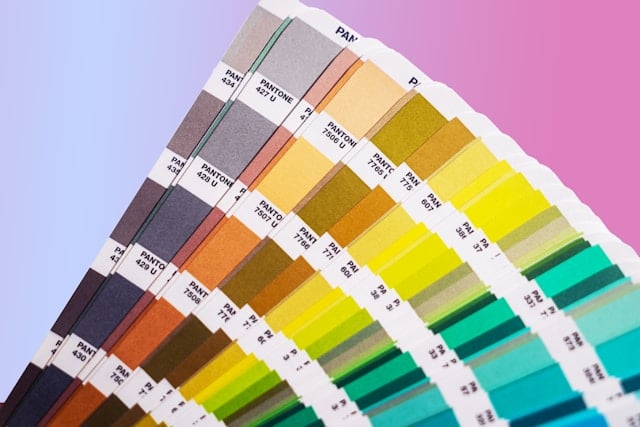The Future of Online Color Matching
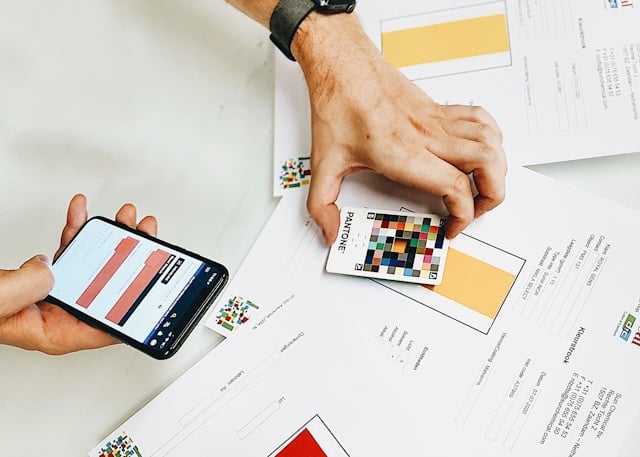
As technology continues to evolve, the future of online color matching holds exciting possibilities that could greatly enhance accuracy and user experience. Emerging technologies like AI-powered color matching, Virtual Reality (VR), and advanced screen calibration tools promise to address many of the current limitations in digital color representation. These innovations will not only improve the online shopping experience but also bring designers, architects, and customers closer to achieving true color consistency across different materials and devices.
1. AI-Powered Color Matching: Precision and Personalization
Artificial Intelligence for Enhanced Color Recognition: AI-powered tools are set to revolutionize online color matching by improving how colors are captured, analyzed, and matched across different materials. Using machine learning algorithms, AI can recognize and adjust for subtle color differences caused by lighting variations, screen settings, and material textures. By analyzing thousands of color samples and lighting conditions, AI can predict how a color will appear in different environments and materials, making it easier to match colors with greater accuracy.
AI for Cross-Material Color Recommendations: AI technology can analyze how colors interact across a variety of materials, suggesting complementary or matching colors based on texture, sheen, and finish. For instance, AI could recommend the best paint match for a chosen fabric color or suggest a metallic finish that complements a wooden element. This would be especially helpful for architects and designers seeking harmonious color schemes without extensive trial and error.
Personalized Color Matching Through Customer Preferences: AI can also learn from customer preferences and previous purchases to tailor color recommendations. By analyzing past orders, preferred color palettes, and style choices, AI can provide color options that align with the customer’s aesthetic, improving the likelihood of satisfaction. This kind of personalization makes the shopping experience more seamless, especially for customers looking for a cohesive color scheme across a series of materials or products.
2. Virtual and Augmented Reality for Real-World Visualization
Virtual Reality (VR) for Immersive Design Experiences: Virtual Reality technology is poised to become a game-changer in online color matching, allowing customers to immerse themselves in a 3D model of their own space where they can view colors in real time. VR can simulate how a chosen color will appear on walls, furniture, and decor under various lighting conditions, enabling customers to visualize their selections in context before making a purchase. This immersive approach minimizes the risk of color mismatches and helps customers feel more confident in their choices.
Augmented Reality (AR) for On-Demand Color Testing: Augmented Reality applications on smartphones or tablets allow customers to “place” items in their physical space to see how colors will look in real-world conditions. By overlaying digital images of products onto live views of their environment, AR lets users test colors and materials on their walls, furniture, and decor with immediate feedback. This approach is especially valuable for construction materials and furniture, as customers can preview how different textures and finishes interact with existing elements in their space.
Customizable Lighting Environments in AR and VR: Advanced AR and VR tools now offer customizable lighting settings, enabling users to see how colors will look at different times of day or under various artificial light sources. Customers can view products in warm, cool, or natural light and even simulate lighting scenarios specific to their own homes, such as a living room with large windows or a kitchen with LED track lighting. This capability provides a more accurate preview, helping customers make choices that will look cohesive and appealing in their actual space.
3. Innovations in Screen Calibration Tools for Improved Color Accuracy
Consumer-Friendly Calibration Apps and Devices: While professional-grade screen calibration tools exist, they are often complex and costly for average consumers. Emerging innovations in screen calibration, such as user-friendly apps and compact calibration devices, could make it easier for customers to calibrate their screens for color accuracy. By ensuring that their screens display colors as intended, consumers can gain a more accurate preview of products, reducing discrepancies between on-screen and real-world colors.
Automatic Color Correction Based on Ambient Light: Some smartphones and laptops already adjust color balance based on ambient light conditions, but future advancements could refine this feature to automatically optimize color accuracy for online shopping. For example, screens could detect when users are viewing colors for a purchase and adjust settings to a pre-calibrated mode optimized for color precision, temporarily overriding user preferences that might distort color.
Screen Profiles for Accurate Digital Color Standards: Another innovation on the horizon is the development of specific screen profiles for online shopping applications. Just as professional photo editing software allows users to switch between color profiles for different workflows, future screen settings could allow customers to activate a “shopping mode” profile optimized for accurate color display on websites or apps. This approach could ensure that users see colors as closely as possible to how they’ll appear in real life.
4. Expanding Use of High-Definition Color Gamut and True Tone Displays
Wide Color Gamut Displays for Enhanced Color Representation: The expansion of high-definition color gamuts, such as DCI-P3 and Adobe RGB, on consumer devices is expected to significantly improve color representation. These color profiles allow screens to display a broader range of colors, making it easier to capture subtle hues and gradients that are often lost on standard sRGB displays. As more consumer devices adopt wide-gamut displays, customers will experience more accurate color previews for products, particularly those with complex colors like metallic finishes or layered textures.
True Tone and Adaptive Displays for Consistent Color in Different Environments: Adaptive display technologies like Apple's True Tone or similar features from other brands automatically adjust color temperature and brightness based on the user’s environment. As this technology becomes more sophisticated, it could be tailored for use in online shopping, adjusting colors to ensure consistency across different lighting conditions. Future versions may even allow for app-specific adjustments, where online shopping platforms can temporarily disable certain color-shifting effects to display true-to-life colors for product imagery.
5. Collaborative Industry Standards for Color Matching in Digital Spaces
Cross-Platform Color Standardization: As technology advances, there is a growing need for unified standards for digital color matching across screens. Collaborations between screen manufacturers, software developers, and online retailers could lead to cross-platform color standardization, ensuring consistent color experiences across different devices. For example, an online furniture retailer could use an industry-standard color profile that adjusts automatically based on the viewer’s device, providing a more reliable color preview.
Integrating Physical and Digital Color Systems: Industry partnerships that align digital color models with physical color systems, such as Pantone and RAL, could create a more seamless experience for color matching. Through the development of new digital color standards that translate directly to physical materials, customers could experience fewer variations between what they see online and the actual products they receive. This alignment would be particularly valuable for color-critical items like furniture and decor, where even slight color mismatches can affect the overall design.
The future of online color matching promises to bring a new level of accuracy, consistency, and convenience to customers, enabling them to make confident, color-accurate purchases from the comfort of their homes. Through advancements in AI, VR, screen calibration, and industry standards, these technologies will help narrow the gap between digital and real-world color representation, empowering designers, architects, and consumers alike to create spaces that truly reflect their vision. As these innovations continue to evolve, the online shopping experience will become increasingly immersive and precise, setting a new standard for color accuracy in the digital era.
Conclusion
Color is a foundational element in architecture and interior design, influencing how spaces feel, function, and connect with people. Achieving accurate color matching is essential for creating cohesive environments, but as design sourcing increasingly moves online, the challenges of maintaining color accuracy across materials and devices have become more pronounced. Variations in texture, lighting, and screen technology add layers of complexity, making it difficult to ensure that colors appear consistent between digital previews and real-world products.
Navigating these challenges requires a blend of technology, transparency, and expertise. Solutions like physical samples, advanced color-matching technology, interactive visualization tools, and clear product descriptions all play a critical role in bridging the gap between online and in-person color experiences. The future of color matching looks even more promising, with innovations like AI, VR, and enhanced screen calibration paving the way for improved accuracy and customer confidence.
At MawadOnline, we are committed to helping customers overcome these challenges by offering a range of advanced tools and services designed to improve color accuracy and simplify the decision-making process. Our customer-first approach emphasizes transparency, providing clear communication around color variations and offering support through personalized color consultations. By staying at the forefront of color-matching technology and prioritizing customer satisfaction, MawadOnline empowers designers, architects, and customers to make confident, informed color choices that bring their design visions to life.


